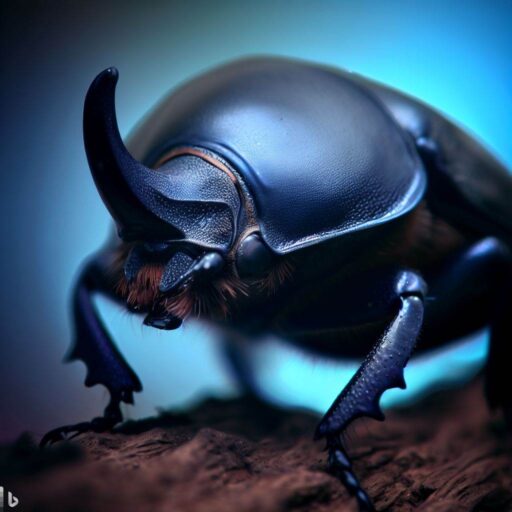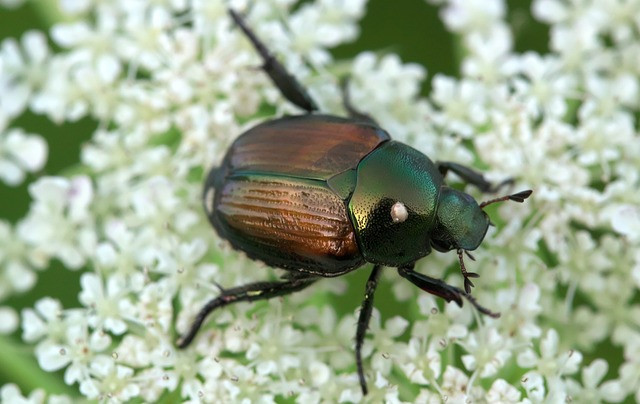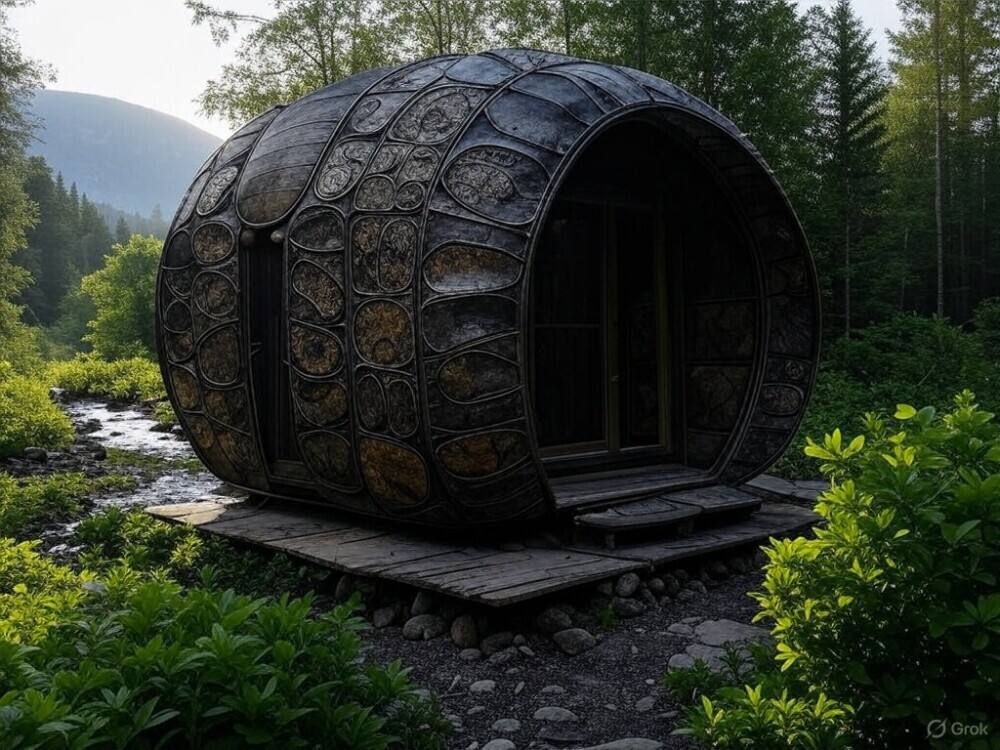.jpg)
- Japanese beetles have a preferred diet of over 300 plant species, including roses, grapes, and fruit trees. Understanding their preferred food can help prioritize protection for vulnerable plants.
- Japanese beetles are voracious feeders and can quickly decimate the foliage of plants. Their feeding habits often lead to reduced plant health, decreased crop yields, and weakened plant resistance to other pests and diseases.
- The feeding activity of Japanese beetles can disrupt ecosystems by altering plant diversity, affecting pollinators, and impacting the food chain. It is important to manage their population and minimize their impact on the environment.
Japanese beetles are notorious pests that can wreak havoc on gardens and crops.
In this section, we’ll provide an insightful overview and description of their eating habits.
You’ll discover which plants are particularly vulnerable to their feeding frenzy and gain a better understanding of the damage they can inflict.
So, let’s dive into the world of Japanese beetles and uncover what makes them such voracious eaters.
Overview

Japanese beetles are pesky insects that can cause serious harm to plants and ruin ecosystems. Knowing their diet and feeding behavior is key to taking efficient control measures.
Diet and Feeding Habits
These bugs love roses, grapes, and linden trees. They’re fast eaters and can strip plants of their leaves quickly. Japanese beetles are drawn to the leaves, flowers, and fruits of these plants, making them easy targets.
Impact on Ecosystems
Not only do they damage plants, Japanese beetles also have an effect on the environment.
Their dining habits can disturb pollination by eating flowers and disrupting the reproduction of plants that rely on bugs for pollination.
This can have a domino effect on other living things that depend on these plants for food or habitat.
Wide Range of Plants
Japanese beetles can eat over 300 species of plants.
Description
Japanese beetles are infamous pests that can wreak havoc on plants. They have a broad range of food preferences, which add to their environmental destruction.
Knowing their eating habits and behavior is important to save plants from their destructive feeding.
- Japanese beetles fancy more than 300 plant species.
- Roses, grapes, linden trees, and other fruit-bearing plants are particularly attractive to them.
- They feed on leaves, flowers, and fruit, leaving behind skeletonized foliage.
- They also exude pheromones that bring in other beetles, causing intensive damage in affected areas.
The primary menu of Japanese beetles mainly consists of roses, grapes, and linden trees. Nevertheless, they have other favored foods.
They chow down on foliage, flowers, and fruit, causing severe damage to plants. Furthermore, the pheromones they discharge bring in additional beetles, making the situation worse in infested areas.
Japanese Beetles Diet
Japanese Beetles are notorious for their voracious appetites, and in this section, we will delve into their diet. Discover their preferred food sources and gain insight into their feeding habits.
From delicate flowers to luscious foliage, these beetles can wreak havoc on plants, causing significant damage.
Understanding their dietary preferences is crucial in effectively managing and protecting our gardens and crops from their destructive tendencies.
Preferred Food

Japanese beetles have a specific taste when it comes to food. They mostly eat certain plants and crops, causing damage to agriculture and horticulture.
The table below shows which plants and crops they prefer:
| Plant/Crop | Preferred by Japanese Beetles |
|---|---|
| Roses | Yes |
| Grapes | Yes |
| Peppers | Yes |
| Tomatoes | Yes |
| Eggplants | Yes |
| Corn | Yes |
The table reveals that Japanese beetles like roses, grapes, peppers, tomatoes, eggplants, and corn.
These plants are highly vulnerable to the beetles’ feeding habits.
However, if their preferred choices are not available, Japanese beetles can feed on other plant species.
This makes them capable of causing damage in different ecosystems.
Feeding Habits
Japanese beetles have a damaging way of eating. They munch on over 300 types of plants, like leaves, flowers, and fruits.
This is a major problem for crops and ornamental plants, as adult beetles consume up to 1/2 ounce of plant material a day.
They also feed in groups, causing rapid destruction.
Their larvae, known as white grubs, feed underground on grasses and other plants. This can damage lawns and turf areas severely.
These beetles are drawn to the scents of their preferred food sources. This attracts them to certain areas, making the damage they cause even worse.
In conclusion, Japanese beetles are a huge threat to plants. To protect against their feeding habits, prevention methods and control measures must be put in place.
Impact of Japanese Beetles Feeding
Japanese beetles can wreak havoc on plants, causing significant damage and disrupting ecosystems.
In this section, we will explore the impact of Japanese beetle feeding, delving into the destruction they cause to plants and the broader effects on the delicate balance of the ecosystem.
Brace yourself to discover the extent of their voracious appetites and the consequences that follow their feeding frenzy.
Damage to Plants
Japanese Beetles are notorious pests, notorious for the damage they cause to plants. They feed on leaves, flowers, fruits, and even bark!
These invasive insects have a preference for certain types of plants, making them particularly destructive in gardens and agricultural settings.
Roses, linden trees, grapes, fruit trees, beans, corn, and tomatoes are all vulnerable to their voracious appetite.
Their consumption results in skeletonized leaves with only the veins remaining intact. This not only affects the look of plants, but also their ability to perform photosynthesis.
Plus, extensive feeding weakens plant structures and makes them more susceptible to diseases and other pests.
Aggregating in large numbers, Japanese Beetles can cause severe defoliation across entire landscapes.
This disruption in local ecosystems has far-reaching consequences for flora and fauna that rely on these plants for food or shelter.
Damage caused by Japanese Beetles is a serious concern, requiring preventive measures such as physical barriers or insecticides.
By doing this, we can minimize the damage these pests have on our plant life and ecosystem.
With their insatiable appetite, Japanese beetles turn gardens into all-you-can-eat buffets, proving that even insects have a taste for destruction.
Effects on Ecosystem
Japanese beetles’ voracious appetite has a significant effect on the ecosystem. They feed on a variety of plants, such as ornamental plants, agricultural crops, and grasses.
This leads to defoliation, weakening plants and making them more susceptible to diseases and other pests.
Their feeding habits can alter food chains, as they consume large amounts of plant material, reducing the food sources for other herbivores.
Predators may then have trouble finding enough food.
The beetles also spread harmful pathogens and parasites as they feed and migrate.
These can destabilize ecosystems, introducing new diseases or parasites native species may not be ready to handle.
Furthermore, their feeding activities may lead to changes in plant communities. Heavily damaged plants create opportunities for other plants that may be resistant or less favored by the beetles.
This can cause shifts in the vegetation over time.
How to Protect Plants from Japanese Beetles
Looking to safeguard your beloved plants from Japanese beetles?
Discover effective prevention methods and control measures in this section, ensuring your garden stays beetle-free.
Learn how to protect your plants through strategic measures backed by factual information, ensuring the longevity of your cherished blooms.
Prevention Methods
Japanese beetles bring destruction to plants and ecosystems, so it’s essential to have prevention methods. Here are five ways to protect plants from potential harm:
- Grow resistant varieties—plants the beetles don’t prefer.
- Put up physical barriers—netting or covers.
- Use companion planting—certain plant combos repel beetles.
- Apply insecticides that target Japanese beetles.
- Keep soil and plants healthy—promote resistance.
These methods help keep gardens healthier while reducing the need for control measures.
Control Measures
Japanese beetles are damaging pests. To protect plants from destruction, control measures must be taken.
Cultural practices such as adjusting irrigation and fertilization can help.
Physical barriers like netting, covers, and sticky traps can also be used. Insecticides should only be used as a last resort and with caution.
Gardeners and farmers should understand control measures for Japanese beetles. This way, they can minimize the harm that these pests cause to plant health.
Conclusion
Japanese beetles have destructive eating habits.
They eat plants like crops, flowers, and garden vegetation – not being picky. This can be bad news for farmers and gardeners who need healthy plants to make money.
The beetles’ feeding leaves a lacy look on leaves. They also cause flowers to wither and die before they should. This makes it tricky to protect crops and maintain gardens.
Japanese beetles like roses, grapes, raspberries, and more. This makes it hard to save plants from them.
But, Japanese beetles have an interesting life cycle. They start in the soil, eating the roots of grass and other plants. This can ruin lawns and farms, adding to their plant damage.
Farmers and gardeners must know this to manage these pests properly.
In summary, Japanese beetles are a problem for farmers and gardeners.
To protect plants, one must understand their life cycle and use pest management strategies.
Some Facts About What Do Japanese Beetles Eat:
- ✅ Japanese beetles are heavy feeders and attack more than 250 host plants.
- ✅ Some of the plants severely injured by Japanese beetles include elm, maple, grape vine, peach, apple, apricot, cherry, plum, rose, zinnia, corn, asparagus, soybean, blueberries, raspberries, and blackberries.
- ✅ The larval stage of Japanese beetles primarily attacks turf, but it also attacks the roots of other plants.
- ✅ Japanese beetles feed on both foliage and fruit of plants.
- ✅ Japanese beetles prefer plants exposed to direct sunlight and start feeding from the top, regardless of height, and work downward.
FAQ
What do Japanese beetles eat?
Japanese beetles are heavy feeders and attack over 250 host plants.
Some of the plants severely injured by the beetle include elm, maple, grape vine, peach, apple, apricot, cherry, plum, rose, zinnia, corn, asparagus, soybean, blueberries, raspberries, and blackberries.
How do Japanese beetles damage plants?
Japanese beetles chew the tissue between the veins of foliage, leaving a lace-like skeleton on the plants.
They are most active on clear summer days with temperatures between 21°C and 35°C and relative humidity above 60%.
The beetles are attracted to plants exposed to direct sunlight and begin feeding at the top, regardless of height, and work downward.
What measures can be taken to protect potted flowers from Japanese beetles?
One way to protect potted flowers from Japanese beetles is by using tulle netting.
Covering the plants with a thin net fabric like tulle can prevent the beetles from reaching them without harming other insects.
However, it may need to be replaced after a few years.
Additionally, spraying a mixture of neem oil, dish soap, and water on the leaves can help kill Japanese beetles and prevent them from laying eggs.
Do Japanese beetles feed on grassy areas?
Yes, the larval stage of Japanese beetles primarily attacks turf and feeds on the roots of grasses.
This feeding can cause patches of dead grass and reduce the grass’s ability to take up water.
Treating the lawn with milky spore and nematodes can help control the beetle larvae.
Are there any natural predators that can help control Japanese beetles?

Yes, using praying mantis and introducing domestic or wild animals that eat Japanese beetles can help control their population.
However, these natural solutions may take time before results are evident.
How did Japanese beetles spread to North America?
Japanese beetles entered North America in 1916 as stowaways on a shipment of irises.
Since then, they have spread across the country and into Canada.
They have also spread to other countries such as Portugal, Russia, India, Korea, and Italy.
The expansion of Japanese beetles is facilitated by human activities and their preference for well-watered lawns.





Leave a Reply